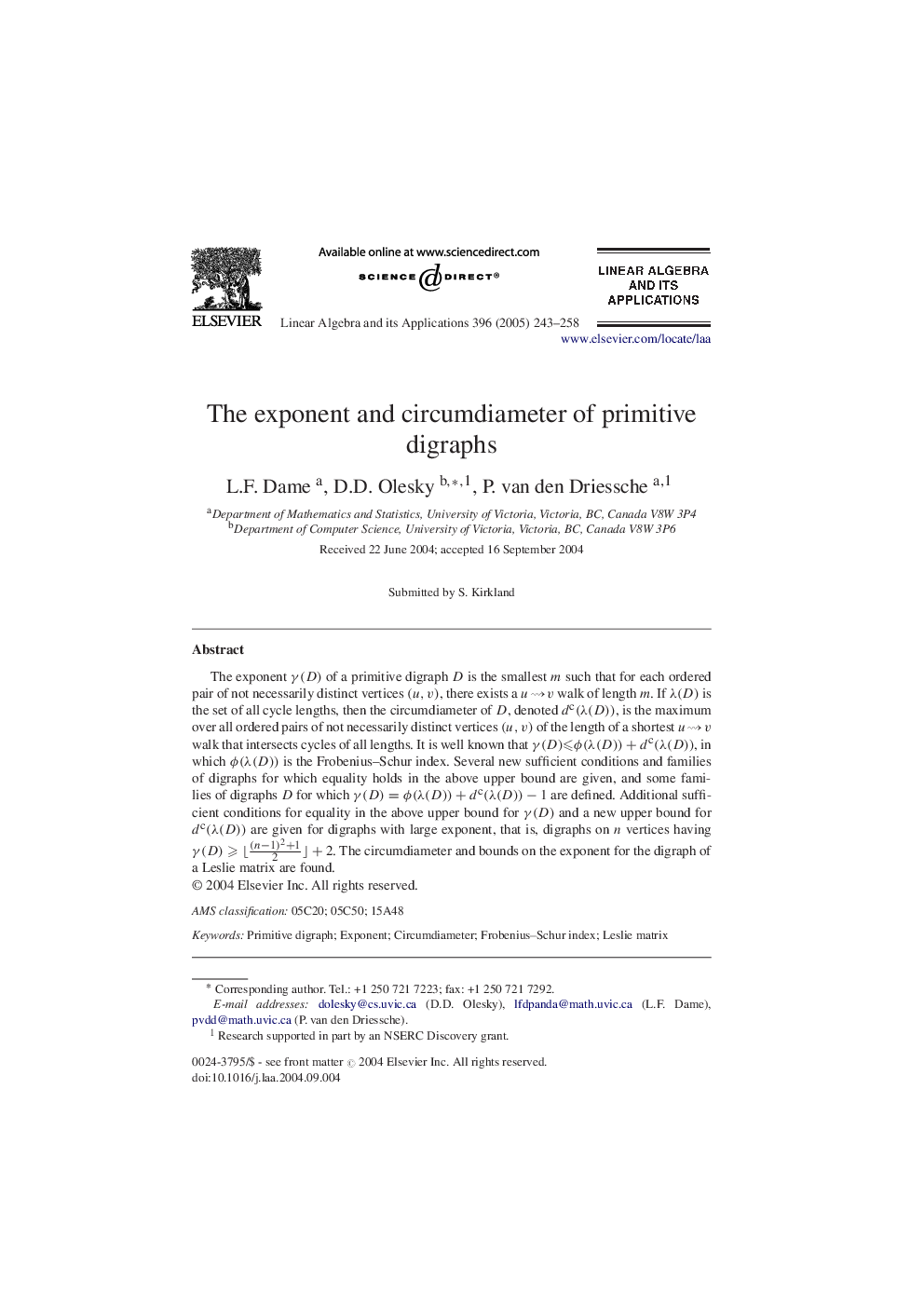| Article ID | Journal | Published Year | Pages | File Type |
|---|---|---|---|---|
| 9498462 | Linear Algebra and its Applications | 2005 | 16 Pages |
Abstract
The exponent γ(D) of a primitive digraph D is the smallest m such that for each ordered pair of not necessarily distinct vertices (u, v), there exists a u â v walk of length m. If λ(D) is the set of all cycle lengths, then the circumdiameter of D, denoted dc(λ(D)), is the maximum over all ordered pairs of not necessarily distinct vertices (u, v) of the length of a shortest u â v walk that intersects cycles of all lengths. It is well known that γ(D) ⩽ Ï(λ(D)) + dc(λ(D)), in which Ï(λ(D)) is the Frobenius-Schur index. Several new sufficient conditions and families of digraphs for which equality holds in the above upper bound are given, and some families of digraphs D for which γ(D) = Ï(λ(D)) + dc(λ(D)) â 1 are defined. Additional sufficient conditions for equality in the above upper bound for γ(D) and a new upper bound for dc(λ(D)) are given for digraphs with large exponent, that is, digraphs on n vertices having γ(D)⩾â(n-1)2+12â+2. The circumdiameter and bounds on the exponent for the digraph of a Leslie matrix are found.
Related Topics
Physical Sciences and Engineering
Mathematics
Algebra and Number Theory
Authors
L.F. Dame, D.D. Olesky, P. van den Driessche,
